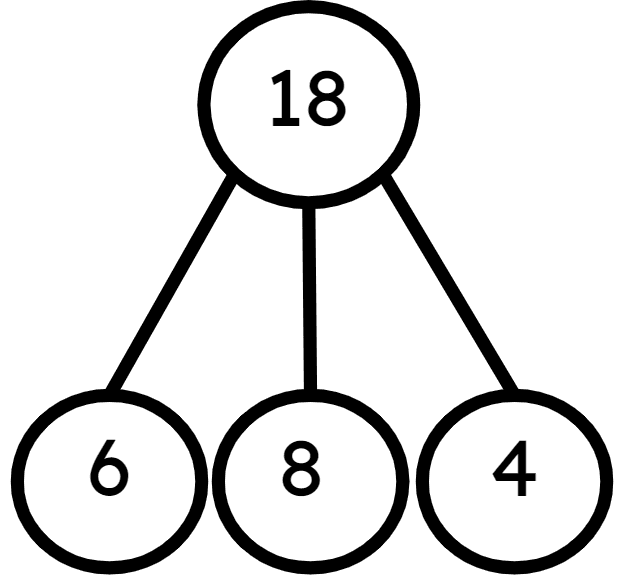Add three addends efficiently by finding two addends that total 10
I can use my knowledge of number pairs to 10 to add three addends efficiently.
Add three addends efficiently by finding two addends that total 10
I can use my knowledge of number pairs to 10 to add three addends efficiently.
These resources will be removed by end of Summer Term 2025.
Lesson details
Key learning points
- The order of the addends can change and the sum stays the same.
- When adding three addends, it is efficient to first find two addends that sum to 10
- ___ add ___ is equal to 10 Then, 10 add ___ is equal to ___
Keywords
Addends - Any of the numbers that are added together.
Number pairs - Two numbers that sum to make 10
Efficient - Not wasting time or effort. An efficient strategy is one we can carry out easily.
Common misconception
If children record incorrectly, they could re-add an addend that has already been used to make a pair to 10
Carefully model how to record thinking, rewriting the new equation inclusive of 10 underneath.
To help you plan your year 2 maths lesson on: Add three addends efficiently by finding two addends that total 10, download all teaching resources for free and adapt to suit your pupils' needs...
To help you plan your year 2 maths lesson on: Add three addends efficiently by finding two addends that total 10, download all teaching resources for free and adapt to suit your pupils' needs.
The starter quiz will activate and check your pupils' prior knowledge, with versions available both with and without answers in PDF format.
We use learning cycles to break down learning into key concepts or ideas linked to the learning outcome. Each learning cycle features explanations with checks for understanding and practice tasks with feedback. All of this is found in our slide decks, ready for you to download and edit. The practice tasks are also available as printable worksheets and some lessons have additional materials with extra material you might need for teaching the lesson.
The assessment exit quiz will test your pupils' understanding of the key learning points.
Our video is a tool for planning, showing how other teachers might teach the lesson, offering helpful tips, modelled explanations and inspiration for your own delivery in the classroom. Plus, you can set it as homework or revision for pupils and keep their learning on track by sharing an online pupil version of this lesson.
Explore more key stage 1 maths lessons from the Calculating within 20 unit, dive into the full secondary maths curriculum, or learn more about lesson planning.

Licence
Starter quiz
6 Questions
9
7
5
6
8
+ 6
+ 4
+ 2
+ 5
10
12
18
14
16
greater than 10
less than 10
equal to 10

Exit quiz
6 Questions





